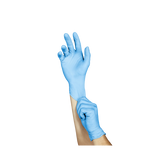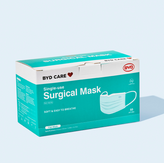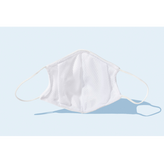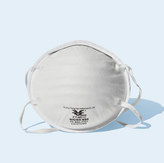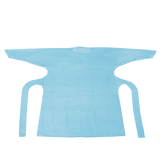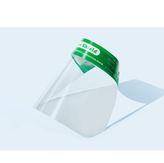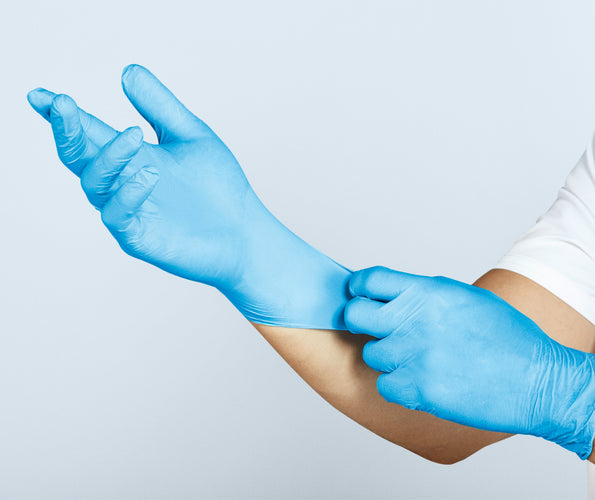Why is it so hard to get gloves?
If you’re a healthcare professional, you’ve probably had some challenges with your nitrile glove supply over the past few months - glove shortages, glove rationing, or a revolving door of brands. If you’re a procurement professional, you’ve probably noticed that nitrile 510k glove prices have doubled (or even tripled), allocations don’t come through, or received gloves have quality issues.
Medical use nitrile gloves typically require FDA 510k approval. This certification requires a lengthy and costly application process. So, the global production capacity of 510k approved factories has been slow to increase while demand has skyrocketed. To fill this gap, many opportunists have flooded the market, resulting in a bustling gray (or black) market for gloves.
Gloves are easier to defraud than other PPE items. With 100 gloves stuffed into a box, gloves are very time consuming to inspect. It’s relatively easy to blend in low quality goods with high quality goods. It’s also common practice for buyers to have their own branded packaging, whereas this is less common for NIOSH masks or other regulated medical goods. This combination of high regulatory barriers, inexpensive, high volume, traditionally own-branded product creates ripe conditions for fraud.
A primer on the gray (or black) market for nitrile gloves
So, what happens in this gray market for gloves? There are three categories of gloves sold in the counterfeit market:
1. Factory seconds from a certified factory: As in any manufacturing process, some product does not pass quality control. This could be for any number of reasons. For example - the boiler was too warm or too cool, resulting in gloves that do not open properly making them impossible to wear; have too many pinholes affecting their safety; are too thin to meet ASTM 6319 standards. Product from the beginning of a new line turnover can also contain residue from previous batches affecting its physical properties or its color. In China, these off-spec, imperfect, “ton gloves” are sold bulk for an average of 6-8 cents per glove. Depending on the defect, some of these gloves are perfectly functional (e.g. a color defect), and others are not (e.g. the gloves do not open). Between 50-70% of these “ton gloves” can be salvaged. Third parties purchase these gloves, hire low skilled workers to sort through enormous bags of gloves, then repackage them in any variety of branded packaging - printing cardboard boxes is easy. While some portion of these “factory seconds” gloves are theoretically usable, there is no way to know whether these third party sorting operations correctly identify usable gloves. Sorting happens offsite in third party warehouses where there are no quality control standards, and certainly no implementation of ISO standards. Therefore, repackaged ton gloves often result in boxes containing multiple shades, far fewer than 100 gloves per box, too many marks or pinholes on the glove, or even mixed sizes in a single box. It’s also interesting to note that many of China’s ton gloves are exported to SE Asia, where they are repackaged to masquerade as product from 510k factories, filtered into the distributor network, and sold to unsuspecting buyers.
2. Product from uncertified factories: This is straightforward counterfeit where a factory without FDA 510k certification will produce gloves and sell them into the bulk glove market to be later repackaged as a 510k approved brand. This might be a factory originally producing latex or vinyl gloves, hoping to make the extra 3-4 cents per glove that nitrile commands.
3. Used gloves: This is where the gray market turns black. Some opportunists have resorted to buying used gloves, washing them, or even powdering them - even though nitrile gloves are meant to be powder-free!
How counterfeit gloves get into the supply chain
In some markets, authorized distributors of legitimate gloves actually partner with counterfeit producers. Here’s how it works: the distributor receives a batch of authentic gloves from the factory through the front door. They call in the lot numbers to the counterfeit producer, who then prints the inner and outer boxes to match those lot numbers. The best repackaging operations will even match the weight of each carton.
Printing cardboard boxes is fast and easy. Counterfeit operations source bulk gloves from the three above channels and print boxes depending on what brands are hot — or have not yet been tarnished— in the spot market. Earlier this year, counterfeiters focused on factory brands such as VGloves, Vietnam’s top 510k glove producer. More recently, counterfeiters have gotten smarter. They’ve focused on established US brands such as 3M Cardinal, Cranberry, and Kimberly Clark rather than factory own brands, knowing that these are strong brands, and further obscure diligence efforts.
How to spot a counterfeit glove
It’s difficult for the factories, for professional inspection services, customs, and buyers to stay on top of fraudsters’ latest tricks. So, how do you spot a bad glove?
- Eyeball test: Does the outside packaging on each carton match factory packaging? This must apply to every box and not simply the exterior cartons visible on the pallet.
- Price: If it’s too good to be true - it almost certainly is.
- Weight: Every box of gloves on the pallet needs to weigh a similar amount within each size. If the weight changes in transit from the factory to your warehouse, something’s not right.
- Count: Third party inspectors can be hired to check a certain number of boxes per pallet before shipment to check on quality and count. We recommend that you pay the additional fee for more boxes to be examined, AND have your own company representative check even more boxes upon arrival or let a professional supplier do this for you. Factor in the need for boxes being opened for testing when you place your order.
- Color: The gloves should generally match the color you ordered. If not, there needs to have been clear communication of this from the factory. That said, being too picky can result in a loss of glove allocation because factories are working at max capacity.
- Size Mix: Make sure that the numbers of XS, S, M, L, XL, match up to what you had asked for.
- Texture: As you open glove boxes to count them, feel the gloves and make sure they feel like ones you’ve ordered before. If not, that could be an indicator that the nitrile blend has been tampered with.
How to get legitimate gloves
Here are a few things you can do to manage your risk:
- Avoid the broker market: This is difficult because many folks are finding themselves in need of 10,000-2 million extra gloves —generally a good spot market number. It is very difficult to trace the chain of custody for gloves landed by brokers. It’s best to get gloves from your historical suppliers or an incremental supplier, like Aiden Health.
- Know the chain of custody: Dozens of people come into contact with your shipment before it gets to you. If you think of each handoff as a risk for shipment swapping, you’ll understand why it's critical to know your product’s chain of custody. This will also be helpful to be aware of if you do receive a fraudulent shipment and need to understand where in the supply chain things went wrong.
- Ship by sea, not by air: In addition to being much cheaper, there are fewer handoff points when shipped via sea since the shipping container is packed right at the factory. Meanwhile, air shipments must be driven to the airport, loaded, and unloaded — which is more risky.
- Plan your purchases ahead of time: This enables you to use shipping to your advantage— the sea route has an advantage to air — and it helps you stay out of the spot market.
Indeed, gloves are having a moment of peak sourcing difficulty. But at the same time, there are many providers finding their way to supply they trust. Remember to plan ahead, double check your shipments, and work with a trusted supplier when purchasing nitrile gloves.


